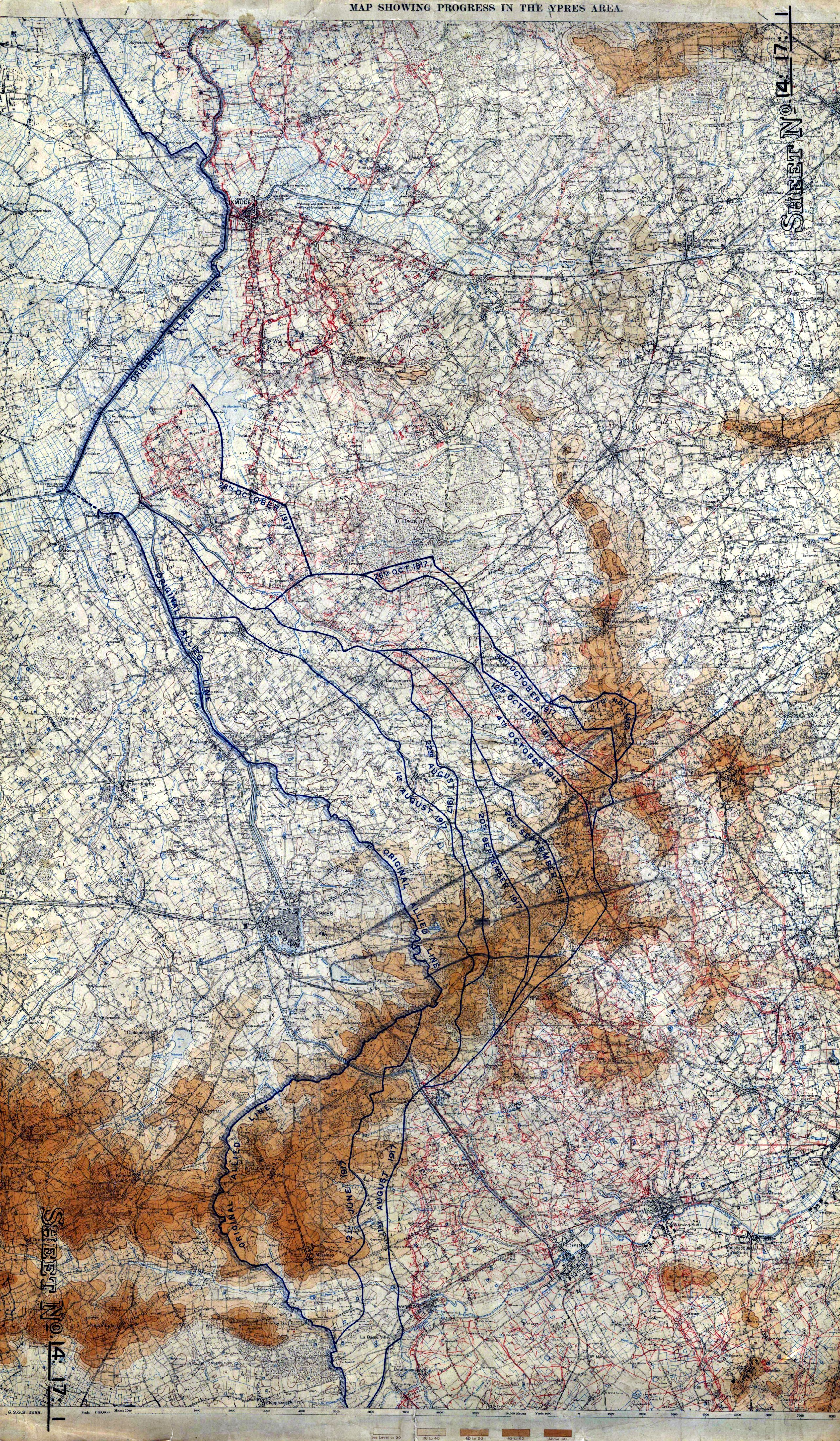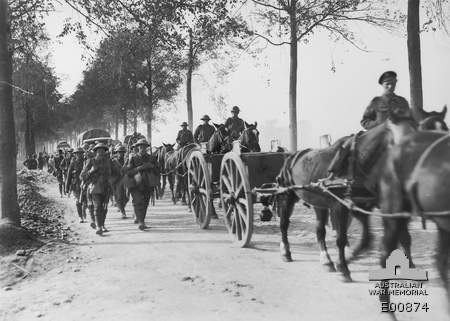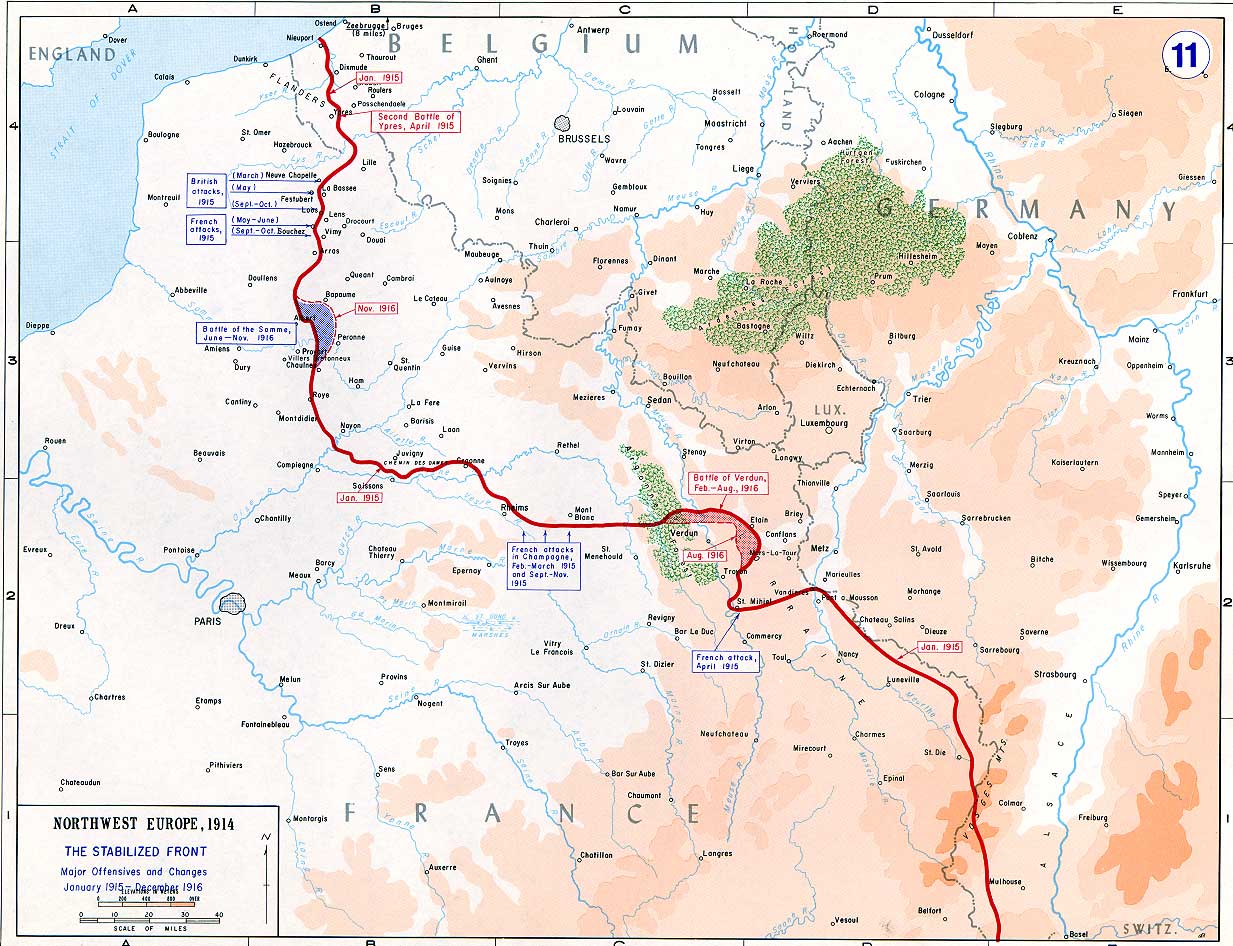|
Henry James Nicholas
Henry James Nicholas, (11 June 1891 – 23 October 1918) was a New Zealand recipient of the Victoria Cross, the highest award for valour "in the face of the enemy" that can be awarded to British and Commonwealth forces. Born in Lincoln, Nicholas was a carpenter when he volunteered for service abroad with the New Zealand Expeditionary Force (NZEF) during the First World War. He was posted to the 1st Battalion of the Canterbury Regiment and served on the Western Front. He received the Victoria Cross for his actions during an attack on the Polderhoek Spur on 3 December 1917. He was later awarded the Military Medal for his actions in an engagement during the Hundred Days Offensive. He was killed in action three weeks before the end of the war. Early life Nicholas was born in Lincoln, near Christchurch, in New Zealand on 11 June 1891 to Richard and Hannah Nicholas and was one of four boys. He did his schooling in Christchurch, first at Christchurch Normal School and later at Chri ... [...More Info...] [...Related Items...] OR: [Wikipedia] [Google] [Baidu] |
Lincoln, New Zealand
Lincoln () is a town in the Selwyn District, in the Canterbury, New Zealand, Canterbury Region of New Zealand's South Island. The town is located on the Canterbury Plains to the west of Banks Peninsula, 22 kilometres southwest of Christchurch. The town has a population of making it the second largest town in the Selwyn District behind nearby Rolleston, New Zealand, Rolleston. Lincoln is part of the Christchurch metropolitan area; at the 2006 Census, 53% of employed Lincoln residents worked in the city. The town is home to Lincoln University (New Zealand), Lincoln University, the oldest agricultural tertiary institution in the Southern Hemisphere and the smallest of New Zealand's eight universities. History In 1862, James FitzGerald (New Zealand politician), James Edward FitzGerald of 'The Springs' subdivided some of his freehold land for the new township of Lincoln, named after the Henry Pelham-Clinton, 5th Duke of Newcastle, Earl of Lincoln, a foundation member of th ... [...More Info...] [...Related Items...] OR: [Wikipedia] [Google] [Baidu] |
Western Front (World War I)
The Western Front was one of the main Theatre (warfare), theatres of war during World War I. Following the outbreak of war in August 1914, the Imperial German Army, German Army opened the Western Front by German invasion of Belgium (1914), invading Luxembourg and Belgium, then gaining military control of important industrial regions in Third Republic of France, France. The German advance was halted with the First Battle of the Marne, Battle of the Marne. Following the Race to the Sea, both sides dug in along a meandering line of fortified trench warfare, trenches, stretching from the North Sea to the Swiss frontier with France, the position of which changed little except during early 1917 and again in 1918. Between 1915 and 1917 there were several offensives along this Front (military), front. The attacks employed massive artillery bombardments and massed infantry advances. Entrenchments, machine gun emplacements, barbed wire, and artillery repeatedly inflicted severe casualties ... [...More Info...] [...Related Items...] OR: [Wikipedia] [Google] [Baidu] |
German Spring Offensive
The German spring offensive, also known as ''Kaiserschlacht'' ("Kaiser's Battle") or the Ludendorff offensive, was a series of German Empire, German attacks along the Western Front (World War I), Western Front during the World War I, First World War, beginning on 21 March 1918. Following American entry into World War I, American entry into the war in April 1917, the Germans decided that their only remaining chance of victory was to defeat the Allies of World War I, Allies before the United States could ship soldiers across the Atlantic and fully deploy its resources. The Imperial German Army, German Army had gained a temporary advantage in numbers as nearly 50 Division (military), divisions had been freed by the Russian defeat and withdrawal from the war with the Treaty of Brest-Litovsk. There were four German offensives, codenamed ''Operation Michael, Michael'', ''Operation Georgette, Georgette'', ''Gneisenau'', and ''Blücher-Yorck''. ''Michael'' was the main attack, which wa ... [...More Info...] [...Related Items...] OR: [Wikipedia] [Google] [Baidu] |
British Empire
The British Empire comprised the dominions, Crown colony, colonies, protectorates, League of Nations mandate, mandates, and other Dependent territory, territories ruled or administered by the United Kingdom and its predecessor states. It began with the English overseas possessions, overseas possessions and trading posts established by Kingdom of England, England in the late 16th and early 17th centuries, and colonisation attempts by Kingdom of Scotland, Scotland during the 17th century. At its height in the 19th and early 20th centuries, it became the List of largest empires, largest empire in history and, for a century, was the foremost global power. By 1913, the British Empire held sway over 412 million people, of the world population at the time, and by 1920, it covered , of the Earth's total land area. As a result, Westminster system, its constitutional, Common law, legal, English language, linguistic, and Culture of the United Kingdom, cultural legacy is widespread. ... [...More Info...] [...Related Items...] OR: [Wikipedia] [Google] [Baidu] |
Ypres Salient
The Ypres Salient, around Ypres, in Belgium, was the scene of several battles and a major part of the Western Front during World War I. Location Ypres lies at the junction of the Ypres–Comines Canal and the Ieperlee. The city is overlooked by Kemmel Hill in the south-west and from the east by low hills running south-west to north-east with Wytschaete ( Wijtschate), Hill 60 to the east of Verbrandenmolen, Hooge, Polygon Wood and Passchendaele ( Passendale). The high point of the ridge is at Wytschaete, from Ypres, while at Hollebeke the ridge is distant and recedes to at Polygon Wood. Wytschaete is about above the plain; on the Ypres–Menin road at Hooge, the elevation is about and at Passchendaele. The rises are slight, apart from the vicinity of Zonnebeke, which has a From Hooge and to the east, the slope is near Hollebeke, it is heights are subtle but have the character of a saucer lip around Ypres. The main ridge has spurs sloping east and one is particularly ... [...More Info...] [...Related Items...] OR: [Wikipedia] [Google] [Baidu] |
New Zealand Division
The New Zealand Division was an infantry division of the New Zealand Expeditionary Force raised for service in the First World War. It was formed in Egypt in early 1916 when the New Zealand and Australian Division was renamed after the detachment of its Australian personnel left the New Zealand Infantry Brigade, together with reinforcements from New Zealand, as the basis of the division. It was commanded by Major General Andrew Hamilton Russell for the duration of the war. The division saw service on the Western Front in France and Belgium, fighting in major battles at the Somme, Messines and Broodseinde Ridge throughout 1916 and 1917. All were notable successes for the New Zealanders but the division suffered a serious defeat at Passchendaele on 12 October 1917, its most costly day of the war. In early 1918, the division helped blunt the German spring offensive at the Somme, before the Allies went on the offensive in August. During the Hundred Days' Offensive that follow ... [...More Info...] [...Related Items...] OR: [Wikipedia] [Google] [Baidu] |
2nd Infantry Brigade (New Zealand)
The 2nd Infantry Brigade was a formation of the New Zealand Military Forces raised for service abroad with the New Zealand Expeditionary Force during the First World War. As part of the New Zealand Division, it participated in several major battles on the Western Front from 1916 to 1918 before being disbanded in 1919. There was also a 2nd Infantry Brigade in the New Zealand Territorial Force that existed from 1924 to 1964. History First World War It was formed in Egypt in 1916 for service with the New Zealand Division on the Western Front. Its original commander was Brigadier General William Garnett Braithwaite, a British Army officer on secondment to the New Zealand Military Forces. Upon formation, the brigade consisted of four infantry battalions: the 2nd Battalion, Auckland Regiment; the 2nd Battalion, Wellington Regiment; the 2nd Battalion, Canterbury Regiment; and the 2nd Battalion, Otago Regiment. This was later changed, though, when several battalions were swapped bet ... [...More Info...] [...Related Items...] OR: [Wikipedia] [Google] [Baidu] |
Auckland War Memorial Museum
The Auckland War Memorial Museum (), also known as Auckland Museum, is one of New Zealand's most important museums and war memorials. Its neoclassical architecture, neoclassical building constructed in the 1920s and 1950s, stands on Observatory Hill, the remains of a dormant volcano, in the Auckland Domain, near Auckland CBD. Museum collections concentrate on New Zealand history (and especially the history of the Auckland Region), natural history, and military history. Auckland Museum's collections and exhibits began in 1852. In 1867 Aucklanders formed a learned society—the Auckland Philosophical Society, soon renamed Auckland Institute. Within a few years Auckland Museum was transferred to Auckland Institute, thereafter known as Auckland Institute and Museum until 1996. Auckland War Memorial Museum was the name of the new building opened in 1929, but since 1996 it has been more commonly used for the institution as well. From 1991 to 2003 the Museum's Māori-language, Māori n ... [...More Info...] [...Related Items...] OR: [Wikipedia] [Google] [Baidu] |
Private (rank)
A private is a soldier, usually with the lowest Military rank, rank in many armies. Soldiers with the rank of private may be conscription, conscripts or they may be professional (career) soldiers. The term derives from the term "private soldier". "Private" comes from the Latin word ''privus'' or perhaps ''privo'' that meant an individual person and later an individual without an Official (other), office. Asia Indonesia In Indonesia, this rank is referred to as ''Tamtama'' (specifically ''Prajurit'' which means soldier), which is the lowest rank in the Indonesian National Armed Forces. In the Indonesian Army, Indonesian Marine Corps, and Indonesian Air Force, "Private" has three levels, which are: Private (''Prajurit Dua''), Private First Class (''Prajurit Satu''), and Chief Private (''Prajurit Kepala''). After this rank, the next promotion is to Corporal. File:prada pdh ad.png, Private (''Prajurit Dua'') File:pratu pdh ad.png, Private First Class (''Prajurit Satu'') ... [...More Info...] [...Related Items...] OR: [Wikipedia] [Google] [Baidu] |
Western Front (WWI)
The Western Front was one of the main theatres of war during World War I. Following the outbreak of war in August 1914, the German Army opened the Western Front by invading Luxembourg and Belgium, then gaining military control of important industrial regions in France. The German advance was halted with the Battle of the Marne. Following the Race to the Sea, both sides dug in along a meandering line of fortified trenches, stretching from the North Sea to the Swiss frontier with France, the position of which changed little except during early 1917 and again in 1918. Between 1915 and 1917 there were several offensives along this front. The attacks employed massive artillery bombardments and massed infantry advances. Entrenchments, machine gun emplacements, barbed wire, and artillery repeatedly inflicted severe casualties during attacks and counter-attacks and no significant advances were made. Among the most costly of these offensives were the Battle of Verdun, in 1916, with a ... [...More Info...] [...Related Items...] OR: [Wikipedia] [Google] [Baidu] |
Sling Camp
Sling Camp was a World War I camp occupied by New Zealand soldiers beside the then-military town of Bulford on the Salisbury Plain in Wiltshire, England. History The camp was initially created as an annexe to Bulford Camp in 1903; it was originally named "Sling Plantation" after the nearby woods. Soon after the beginning of World War I, New Zealand troops started work on building wooden huts here. They were later joined by Canadian troops, joiners, bricklayers, and civilian workers. The word "Plantation" was then dropped from the title and it simply became Sling Camp. After building was completed, it was said that if each hut were placed end-to-end they would measure 6 miles. In 1916, the camp was occupied by New Zealand forces and was then known as Anzac Camp by some. It then comprised four main sections: Auckland, Wellington, Otago, and Canterbury Lines. It was officially called the 4th New Zealand Infantry Brigade Reserve Camp, and trained reinforcements and casualties who were ... [...More Info...] [...Related Items...] OR: [Wikipedia] [Google] [Baidu] |
Territorial Force (New Zealand)
The New Zealand Army (, ) is the principal Army, land warfare force of New Zealand, a component of the New Zealand Defence Force alongside the Royal New Zealand Navy and the Royal New Zealand Air Force. Formed in 1845, as the New Zealand Military Forces, the Army traces its history from settler militia raised in that same year. The current name was adopted by the New Zealand Army Act 1950. During its history, the New Zealand Army has fought in a number of major wars, including the Second Boer War#New Zealand, Second Boer War, the First World War, First and Second World Wars, New Zealand in the Korean War, Korean War, the Malayan Emergency, Indonesia–Malaysia confrontation, New Zealand in the Vietnam War, Vietnam War, and more recently in Iraq War, Iraq and War in Afghanistan (2001–2021), Afghanistan. Since the 1970s, deployments have tended to be assistance to multilateral peacekeeping efforts. Considering the small size of the force, operational commitments have remaine ... [...More Info...] [...Related Items...] OR: [Wikipedia] [Google] [Baidu] |







